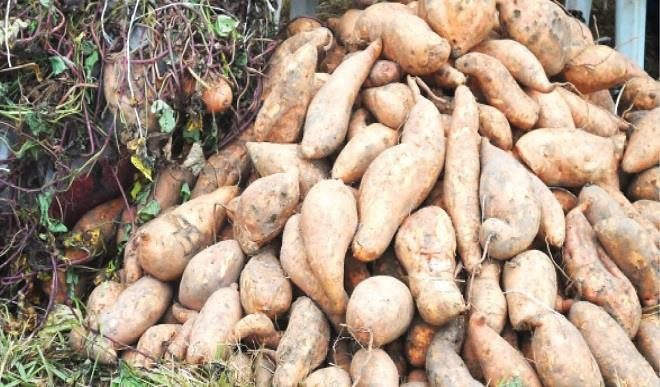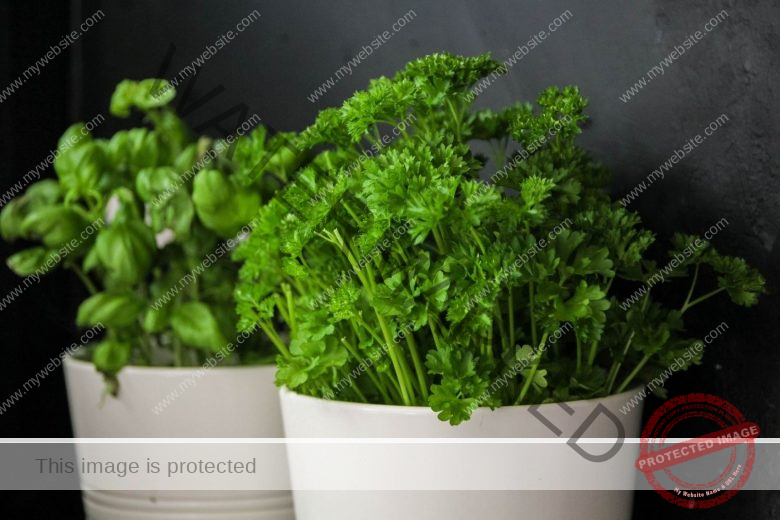Growing Irish Potatoes in Uganda is a great way to start your own farming business, and they are simple to grow and yield great results.
This article contains vital information like site selection, land preparation, acquiring the best varieties, seed preparation, seed potatoes planting, regular watering, fertilizer and mulching, weed and disease control, and harvesting.
If you are interested to start growing your Irish potatoes, I have compiled in this article, the information required to grow Irish Potatoes in Uganda.
How To Grow Irish Potatoes In Uganda
Growing Irish potatoes in Uganda is easy and can be done by anyone. However, there are several things that you need to know which have been discussed below.
Read Also: [Complete Guide] How to Grow Cashew In Uganda
Step 1 – Site selection
Irish potatoes require a cool climate with plenty of rain and temperatures ranging from 10 to 23 degrees Celsius. As a result, make sure to plant them in an area that meets these conditions.
Well-drained soil with moderately acidic loamy soil is required. So, before planting, add some organic matter to your soil to enrich the nutrient if it is falling short.
Read Also: [Beginners Guide] How To Grow Beans In Uganda
Step 2 – Land preparation
Before you plant your Irish potato, you must clear the field of all bush and tree trunks. After that, the land must be tilled and deeply plowed. To loosen the soil and eradicate weeds, dig it again two weeks before the rains start. Manure or compost should also be used to supplement soil nutrients.
Make farm beds that are 2 to 3 inches high to provide the potato plant ample room to grow because it is a root crop that will burrow deep into the soil.
Read Also: [Best Guide] How To Grow Onions In Uganda
Step 3 – Acquire the Best Varieties
You need to consider that there are different varieties of potatoes available for sale. Some of these varieties are red and some are white. A good number of the varieties would be classified under white potatoes with a lot of yellow skin on them.
Visit a farm store or Irish garden to get the Irish potato varieties that you can plant on your farm.
Step 4 – Seed Preparation
Potatoes are grown from seed potatoes. Choose disease-free ripe tubers with no damage for planting. Treat the tubers by mixing them with herbs such as neem leaves or lantana camera to make the seed potatoes pest-resistant.
After that, store them in the pocket of an egg carton or bowl and placed them in a warm location for 15 to 20 days before planting. This allows the seed potatoes to sprout. Allow 10 – 15 days for them to sprout at a temperature of 15 – 20oC.
Diseased potato tubers, as well as decaying potatoes, should be removed. Choose sprouting potatoes that are in good health.
Step 5 – Seed Potatoes Planting
After the soil has been prepared and your seeds are well prepared and ready to plant, you can plant them on the field.
When planting in the field, it is vital to keep the season in mind. If it’s raining, don’t submerge the potato plants in water for more than an hour following heavy rain.
Plant the tubers in raised farm beds that are 30cm high and 80 to 100cm apart. The farm beds can later be raised even higher.
Step 6 – Regular Watering
Water your potatoes regularly after planting. When potatoes first begin to grow, they require moist, enriched soil. Water on top of the fertilizer to aid in its incorporation into the soil.
The soil in the potato patch should always be moist and damp. When the soil begins to dry out, water it to keep it moist.
When it rains, keep an eye out to see if the water drains away from your potatoes. The trenches in which you planted your potatoes should keep accumulating water away from your growing crop.
Step 7 – Fertilizer and Mulching
When the potato’s stem is about 4 inches (10 cm) tall, apply 1 cup (128 g) of fertilizer to the area. It is best to continue the application of the same fertilizer used previously during the land preparation stage. Pour about 1 cup (128 g) of fertilizer for every 30 feet (9.1 m) of row.
Mulch the soil immediately after the plant starts germinating to retain moisture if the weather is too extreme. Also, mulching hinders weeds from germinating along with your plants.
Step 8 – Weed and Disease Control
Weed control aids in the reduction of competition for moisture, nutrients, and light. As a result, weed when the crop is around 10 cm high and again when it is 20-25 cm high. Weeding early is preferable to avoid plant interaction and the spread of diseases such as the potato virus.
Potato plants can be prone to pests and diseases, so keep a watch out for any issues. If you notice anything unusual, contact your local agricultural extension office for support and advice.
Step 9 – Harvesting
It takes 3 to 4 months for Irish potatoes to grow to maturity. When the foliage dies off, it is a sign to harvest your potatoes. Harvesting can be done using hoes, spades, and gardeners, or the tubers can be lifted mechanically with lifting devices.
Variety of Irish Potatoes in Uganda
Uganda has several varieties of Irish potatoes that can be grown in different regions of the country. Some of the popular Irish potato varieties that can be grown in Uganda include:
- Victoria
- Rutuku
- Kisoro
- Kinigi
- Shangi
- CIP 392193.12
These varieties differ in their taste, texture, and appearance and have different growing requirements.
Irish Potato Prices in Uganda
The price of Irish potatoes in Uganda varies depending on the region, season, and supply and demand factors.
On average, a kilogram of Irish potatoes can cost between UGX 1,000 and UGX 2,500. Prices may be higher during the offseason when supply is low, while prices may be lower during the peak season when supply is high.
Best Agronomic Practices to Grow Irish Potatoes in Uganda
To grow Irish potatoes successfully in Uganda, it is essential to follow the best agronomic practices. Some of the best agronomic practices that you can engage in to grow Irish potatoes in Uganda include:
- Soil Preparation: Ensure the soil is well-draining, fertile, and rich in organic matter.
- Irrigation: Provide adequate water to the plants to ensure proper growth and development.
- Fertilization: Apply appropriate fertilizers at the right time to provide the plants with essential nutrients.
- Pest and Disease Control: Monitor the plants regularly for pests and diseases and use appropriate control measures when necessary.
- Harvesting: Harvest the Irish potatoes at the right time to ensure optimal quality and yield.
Projected Profit of Irish Potatoes in Uganda
The profitability of Irish potato farming in Uganda depends on several factors, including the yield, market demand, and input costs.
On average, a well-managed Irish potato farm can yield between 10 and 25 tons per hectare. If sold at the current market prices, a farmer can earn between UGX 10 million and UGX 60 million per hectare.
However, this figure may vary depending on the region, season, and market demand.
Common Diseases and Pests of Irish Potatoes
Irish potatoes in Uganda are susceptible to various diseases and pests. Some of the common diseases and pests of Irish potatoes include:
- Bacterial wilt: This is a disease caused by the bacterium Ralstonia solanacearum, which attacks the vascular system of the Irish potato plants, causing them to wilt and die. The bacteria can persist in the soil for several years, making it difficult to control. Treatment involves using resistant potato varieties, crop rotation, and good sanitation practices.
- Late blight: This is a fungal disease that causes brown spots on the leaves and stems. Treatment involves applying fungicides and practicing good cultural practices.
- Aphids: These are small insects that suck the sap from the plants, causing stunted growth and distorted leaves. Treatment involves using insecticides or introducing natural predators such as ladybugs.
- Potato tuber moth: This is a pest that attacks the Irish potato tubers, causing them to rot. Treatment involves using insecticides and practicing good storage practices.
Different Propagation Methods of Irish Potatoes
Irish potatoes can be propagated through various methods, including:
- Seed tubers: This involves using small pieces of Irish potato tubers to grow new plants.
- Tissue culture: This involves growing Irish potato plants from small pieces of tissue in a laboratory.
- True potato seed: This involves growing Irish potato plants from seeds, which is a more advanced method of propagation.
Each propagation method has its advantages and disadvantages, and the choice of method will depend on factors such as the scale of production, availability of resources, and the growing environment.
How Long Do Irish Potatoes Take To Grow?
Irish potatoes grow to maturity between 90 and 120 days after planting.
How Do I Plant Irish Potato?
You plant Irish potato by placing the sprouted seed potato on the farm bed or trench. Then cover with 3 inches of soil. If you are planting in a large space, make sure you space the seedling 10 to 12 inches apart.
How Many Bags Of Irish Potatoes Can An Acre Produce?
If you plant your potatoes on an acre of land, you can expect to get between 30 and 100 bags of Irish potatoes, depending on the variety, care, and maintenance.
How Long Do Irish Potatoes Take To Germinate?
Irish potatoes reach maturity 90 to 120 days after planting.
How Much Is a Sack of Irish Potatoes In Kampala?
The cost of a sack of Irish potatoes in Kampala is sh250,000.
How Many Potatoes Will One Plant Produce?
One plant of potato will produce between 5 to 10 potatoes.
How Much Is A Sack Of Irish Potatoes In Kampala 2022?
A sack of Irish potatoes in Kampala in 2022 cost between sh250,000 to sh320,000.
How Profitable Is Irish Potato Farming?
Irish potato farming is a profitable agribusiness in which you can invest. The cost of starting Irish potato farming is low when compared to other types of crop farming, and the profit ranges from 30% to 100% of the initial investment.
How Many Bags Of Fertilizer Do You Need Per Acre Of Potatoes?
For an acre of land filled with potato plants, you will need 3 bags of fertilizer to satisfactorily feed the plant with the right nutrient.
How To Grow Irish Potatoes In Uganda Pdf
How to grow Irish potatoes in Uganda PDF contains all the steps and tips that will help you successfully grow Irish potatoes. The material includes information such as:
- Soils requirements for Potatoes
- Climate requirement
- Seed preparation
- Planting method
- Fertilizer application process and requirements
- How to plant Irish potatoes
- How to weed Irish potato farm
- How to harvest matured Irish potatoes
How Many Bags of Irish Potatoes Per Acre in Uganda
Irish potato farmers in Uganda harvest about 40 to 80 bags of potatoes per acre.
Spacing of Irish Potatoes
The ideal spacing for Irish potatoes is to plant the seed potatoes 10 to 12 inches (25-31 cm.) apart.
How to Plant Irish Potatoes
- Locate an ideal farmland
- Prepare the farmland and dig trenches or farm beds.
- Apply fertilizer or compost to enrich the soil.
- Prepare the farmland and dig trenches or farm beds.
- Prepare the seed for planting
- Make use of fertilizer or organic manure.
- Irrigate and mulch the soil to keep it moist.
- Disease and weed control
- Harvest
Irish Potato Farming Pdf
Irish Potato Farming is a systematic guide to the proper selection and management of Irish potatoes. Irish potato farming PDF is written per modern farming practices, this is your comprehensive guide to Irish potato farming, with specific instructions on how to grow and market your crop.
The Irish potato farming PDF includes detailed chapters on seed beds, fertilizers, growing mediums, and soils, planting methods and varieties for different crops, and soil fertility practices for specific crops to prevent losses due to frost, disease, and insect infestation.
Prices of Irish Potatoes in Uganda
The price of Irish potatoes ranges from sh40,000 to sh320,000 depending on the size of the container or sack.
Irish Potatoes Business in Uganda
The Irish potato business in Uganda is booming. The business includes the production and sales of fresh Irish potatoes. Other Irish potatoes business that you can do in Uganda include
- Sales of fried, boiled, or steamed potatoes
- Processed Irish potato products
- Sales of Irish potato seeds for planting
- Sales of Irish potato farming equipment, and so on
How to Manage Irish Potatoes
You need to manage your Irish potato so that they can grow properly and produce a high yield. Irish potatoes management includes:
- Adequate soil moisture
- Regular weeding
- Pest and disease control
- Thinning
Conclusion
Growing Irish potatoes is can be fun and rewarding at the same time. With the steps and tips discussed here, you will be able to successfully establish and grow your Irish potatoes in a garden or farmland. Make sure you read through the steps and follow them accordingly.






thanks alot. when we make the ridges, do we plant the seeds on top of the ridge or in the depression between?
what if I don’t make the ridges and just plant the way we plant maize?
Mutyogoma Joseph
It is preferable you plant on top of the ridges, also you can plant on bare ground.
Why ridges is good is largely because of two reasons.
Firstly to bring about more space and prepare the soil for the tubers to grow well and grow bigger.
Also, for easy harvest during harvest period.